| Kitoko | Date: Monday, 20.04.2015, 07:13 | Message # 1 |
|
Observer
Group: Newbies
 Canada
Canada
Messages: 3
Status: Offline
| I found a very cold moon, which seemingly has life surviving at a whopping -194.76C. It orbits an ice giant that sits 4.346 AU from it's parent star, an orange dwarf.
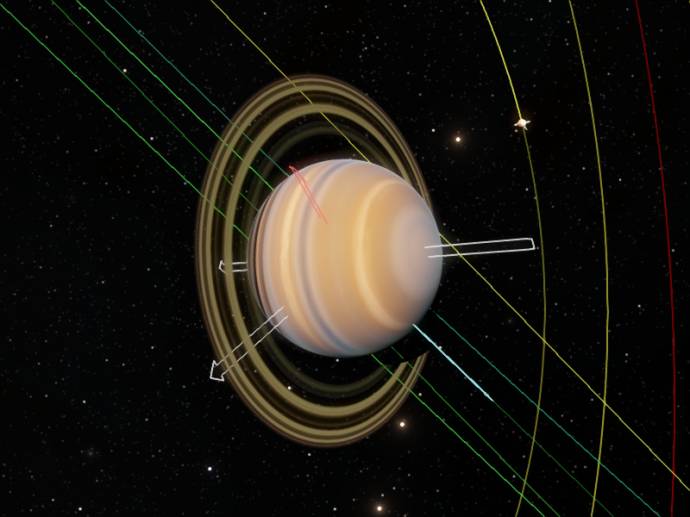
The planet, itself, has a good system of moons, as well as some rings. (11 moons) One of them, which I have named Lexus, has life. (See below)
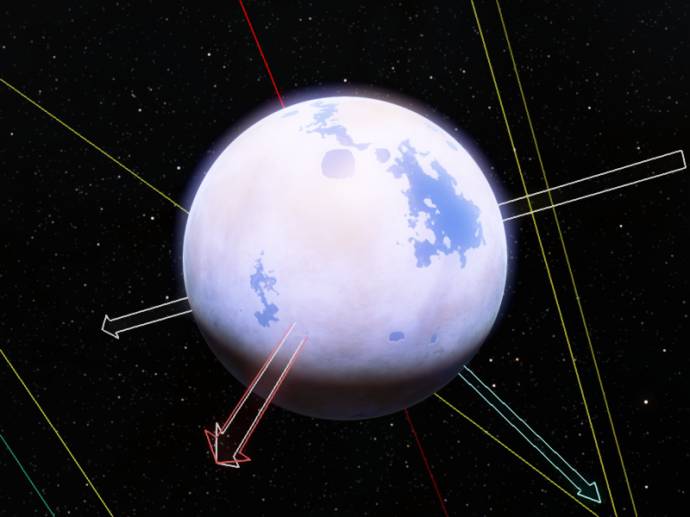
It has lakes, which I have deducted, to be Oxygen lakes, due to the blue color. It's quite phenomenal, that the oxygen, which we would breathe for granted, would be swum around, on this planet, by its creatures. It's atmosphere might contain a combination of Helium, Hydrogen, and Nitrogen. There are also Fluorine crystals, which sometimes synthesize on the dark side of the frozen moon. It's surface, consists of ice, further proving the abundance of oxygen lakes, which were likely leftover remnants of the synthesis of the ice.
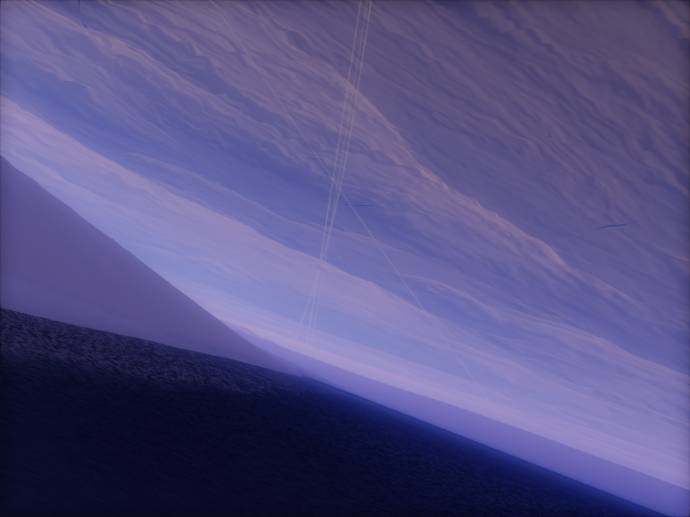
This planet does not weigh too much, but it is able to hold onto an atmosphere of approximately 0.7 times the atmosphere of our planet, Earth. Stepping on the planet, would feel very light. The ice below, would squish, and you would be able to hear it. It's gravity is only twenty percent that of the Earth. Jumping around would feel like.. moon-jumping, for lack of a better term. It is likely, that Fluorine might have synthesized with Neon, but it also probably wouldn't last long, due to the thinner atmosphere. If you wanted to breathe, you would scoop up some of the liquid oxygen, and throw it to your throat. (assuming you wouldn't instantly freeze doing so) Quite a few of some of the heavier gases, would become solid. A lot of those solids would become ideal for synthesis for life. However, metabolism in such a cold, cold place, would occur very slowly. Be careful though, life on this planet is very fragile to heat. Even the radiation emitting from your space suit could be enough to start boiling the creatures.
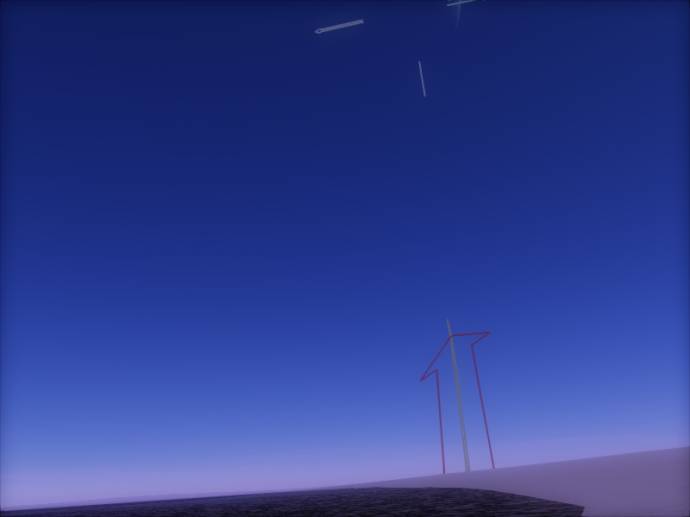
Here's what a lake would look like.
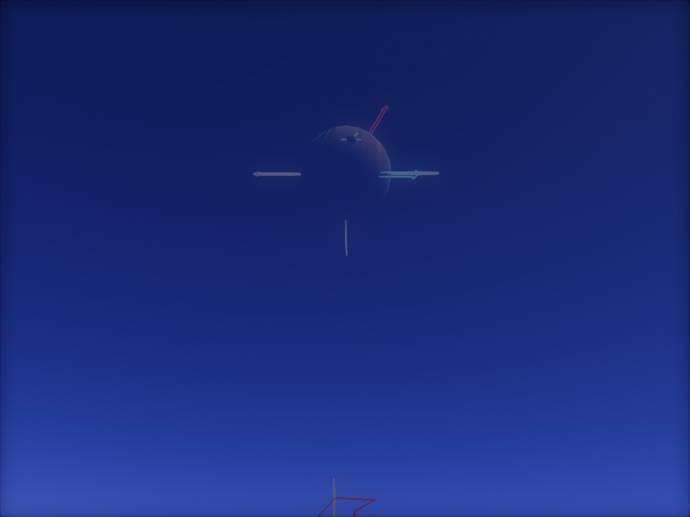
Here's a view of it's parent planet. At this time, there is also a neighboring moon partially eclipsing the parent planet, which, with how might light it reflects, is just as ominous as the sun in this sky.
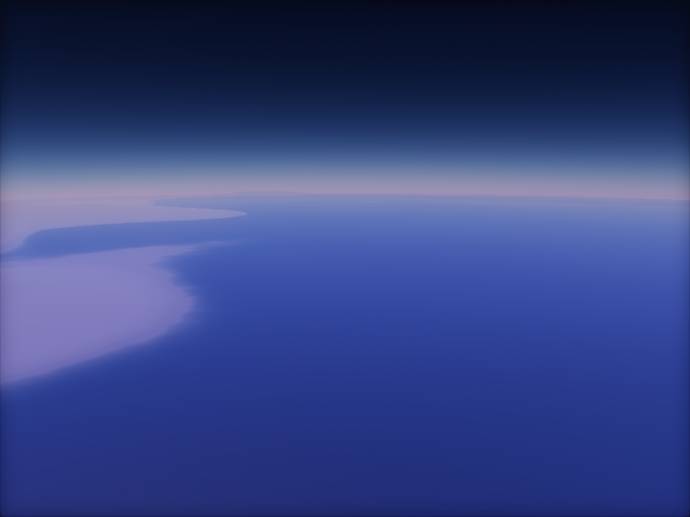
Now, for an aerial view. The atmosphere, as seen here, looks very earth-like. this is due to the presence of Nitrogen and Oxygen. It's an interesting spectacle to look at. Imagining that this is what they creatures would see... for about two of our earth days. Until it's surface flips unto the other side...
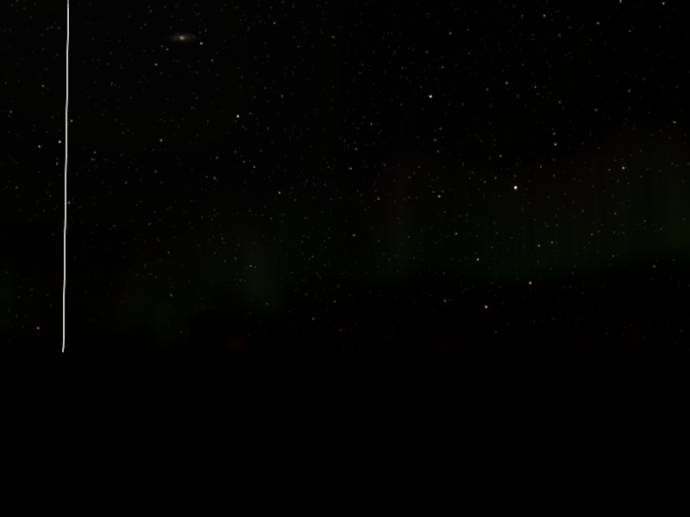
As soon as we get to the dark side, auroras become visible. What this may suggest, is that the moon may possibly a solid and metallic core, and potentially a magnetic field. Here, nights are cold(er), but to the nature of life here, this temperature feels very miniscule. The auroras seem to suggest that this moon, in fact, has poles. This could mean that it would have it's own years, as well as days and nights. The creatures on this planet would likely have a measure of time.
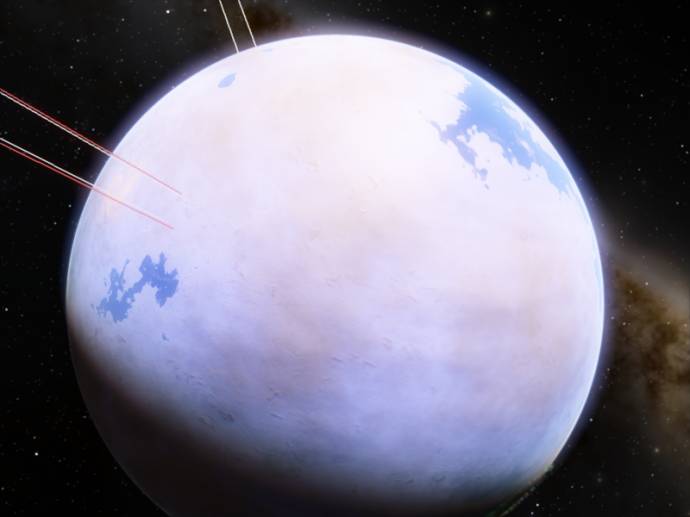
If you want to visit this planet though, you'll have to bring some sunglasses. With unaided vision, you might become blinded by the reflection given off. I set my exposure to 0.19x just to be able to see properly.
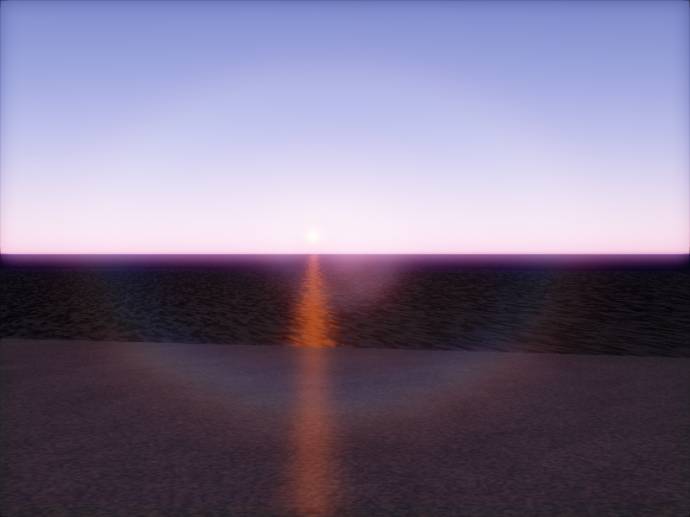
Finally, I leave you with what sight-seeing looks like on this planet, sitting on an island in a large ocean. This would be something citizens would pay to see, staying there for days, as the sun would peep above the surface here for but a day on our time, before very very slowly setting below the horizon.
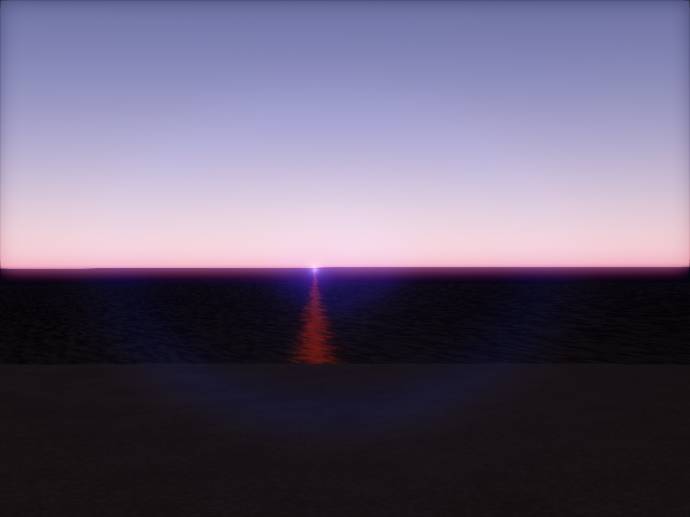
As it does this, the ocean waves themselves are able to offset the sunset, causing a pretty and vivid display of blue and red luminosity. This is certainly something I would pay to watch. The Oxygen sea here allows for the sun's light to travel through it with ease, resulting in this translucent effect.
The creature classification is labeled as marine, and terrestrial, suggesting that the oxygen lakes might have been the harbor of life on this moon. Despite, it is possible that life on this planet could be far developed; the moon itself is about 11 billion years old, far older than our planet Earth. In fact, it's been around since close to the beginning of the universe. They would have few places to visit, however, if they consider interstellar space travel. Very few planets are this cold with a dense enough atmosphere for life of this nature. In fact, it would start to remind you about how fragile life is on Earth.
This was absolutely awe-inspiring. I am very glad I downloaded this program. Feel free to concoct more research on the chemical makeup of this shiny yet frigid moon that mysteriously has life on it.
Here is "Lexus"
Place "Lexus"
{
Body "RS 8409-479-7-899293-172 8.3"
Parent "RS 8409-479-7-899293-172 8"
Pos (1.169073999391333e-010, 1.857590157540966e-010, 1.728662360825362e-010)
Rot (-0.01339854790316993, -0.2189444674780394, -0.4379055104508931, -0.8718500805709587)
Date "2015.04.22 00:37:28.26"
Vel 1.1761192e-010
Mode 1
}
Here is the sunset spot.
Place "Lexus Sunset"
{
Body "RS 8409-479-7-899293-172 8.3"
Parent "RS 8409-479-7-899293-172 8"
Pos (-2.428880973301753e-011, 8.950614603870158e-011, 5.865832743579685e-011)
Rot (0.2012931064446438, 0.175589085716035, -0.9320597520970633, -0.2447737257060756)
Date "2015.04.22 18:25:03.85"
Vel 4.7851288e-015
Mode 2
}
EDIT: I managed to discover, that the rotation of the moon is governed by its parent planet. This means it has poles, and can possibly have a magnetic field, too. Here is a great location for observing the cycle of day and night. It takes somewhere between 4 or 5 earth days for it to cycle. It's the same amount of time it takes to orbit it's parent moon.
Place "Lexus Daylight Cycle"
{
Body "RS 8409-479-7-899293-172 8.3"
Parent "RS 8409-479-7-899293-172 8"
Pos (1.648290499315502e-012, -1.9926023179552e-011, 1.079197503388828e-010)
Rot (-0.5580530188979058, -0.7430934071390952, 0.2427117032741036, 0.2783523764208383)
Date "2015.05.21 16:08:25.57"
Vel 6.5429711e-014
Mode 2
}
Edited by Kitoko - Monday, 20.04.2015, 08:48 |
| |
| |
| parameciumkid | Date: Tuesday, 21.04.2015, 01:45 | Message # 2 |
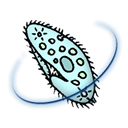 Explorer
Group: Users
 United States
United States
Messages: 277
Status: Offline
| If you don't mind me asking and sounding like a noob, how did you get those awesome arrows? I've gone into what claims to be "edit mode" and seen nothing of the sort.
Intel HD Graphics 4000 ;P
|
| |
| |
| Kitoko | Date: Tuesday, 21.04.2015, 01:53 | Message # 3 |
|
Observer
Group: Newbies
 Canada
Canada
Messages: 3
Status: Offline
| Funny enough, I don't know. All I know is it was probably part of the default settings, because I'm sitting here unable to find out how to disable the arrows. Maybe it has something to do with the orbits? Perhaps the arrows are markers of poles, and path to the parent?
If I remember there's a readme.
|
| |
| |
| GThing | Date: Tuesday, 21.04.2015, 10:57 | Message # 4 |
|
Observer
Group: Newbies
 South Africa
South Africa
Messages: 1
Status: Offline
| In the 'Planetarium' click 'settings', and switch off vectors.
Well, that's what I did anyway, and the arrows are gone 
|
| |
| |
| Himself | Date: Thursday, 23.04.2015, 23:57 | Message # 5 |
|
Astronaut
Group: Users
 United States
United States
Messages: 45
Status: Offline
| I think this would be a titan, right? If then I think the lakes/sea would be liquid methane.
|
| |
| |
| TMan | Date: Saturday, 25.04.2015, 21:46 | Message # 6 |
|
Observer
Group: Newbies
 United States
United States
Messages: 2
Status: Offline
| Just registered to say how much I enjoyed this writeup. I'm going to see if you've done more like this and if not I'll look forward to more in the future 
|
| |
| |